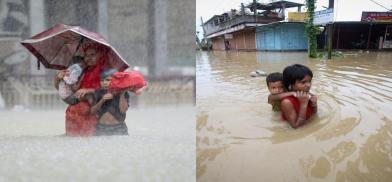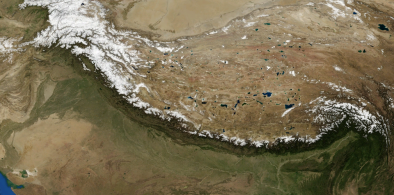Need to take a holistic approach to flood control in South Asia
Over 54 major watercourses draining excess water from South Asia into the Bay of Bengal flows through Bangladesh, to which is added its own share of rainfall, writes Ambassador Sarvajit Chakravarti (retd) for South Asia Monitor

It is indeed strange and sad that eastern South Asia from Bihar, in India, to Bangladesh must suffer seasonal floods annually despite the supposedly best efforts of the water resources and irrigation specialists in both countries. Flooding affects Assam, in northeastern India, most severely because of very high seasonal rainfall in the catchment area of the Brahmaputra basin and the relatively narrow lean season watercourses before these rivers enter Bangladesh, laden with enormous amounts of silt.
There is little potential in upper Assam to build dams and make reservoirs to regulate this flow. So, the flood waters spread into Bangladesh through the Barak Valley and the Surma-Kushiyara basins into the Meghna river system, with the remaining flow entering Bangladesh through the Jamuna.river training embankments have not yet proved effective.
Hence, out of the box thinking is necessary by both countries to mitigate this regular annual disaster which holds back our growth potential and prosperity considerably as funds have to be devoted by the governments and affected public to reconstruct shelters and structures washed away or damaged.
Dhaka needs expertise
These funds could otherwise have been used for productive economic activity. Deltaic Bangladesh has little choice but to deal with this excess seasonal river flow and mitigate or avoid its effects to the maximum possible extent. In this enterprise, Bangladesh needs the best expertise in the world and maximum cooperation from the BBIN nations.
Several low-cost remedial measures can be examined for implementation in this context. The easiest of this is to lay jute netting and then intensively plant riverbanks with grasses and shrubs that can spread by layering. This greening of riverbanks can be done between flood seasons to compact and reduce the friability of the river banks. Secondly, channels may be developed to direct some of the water into wetlands, lakes and subsidiary water bodies such as the haors and bils of Kishoreganj and other areas of north-eastern Bangladesh. Canal systems may augment irrigation capacity and also channel excess water into other watercourses.
The third idea is to reconstruct vulnerable housing on pillars to provide accommodation from the first floor upwards, allowing flood waters to continue flowing unimpeded and assist in their receding faster towards the sea. A choice must be made about the average rate of flow, as lower rates will encourage siltation of channels while higher flow rates will push the silt load faster into the Bay of Bengal.
Annual disaster
The annual floods of the Ganga system caused by drainage of monsoon rains into Himalayan rivers needs similar handling in Bihar as the excess water is drained to a large extent by the tributaries of the Ganga into the Padma river and from northern West Bengal, Sikkim and Bhutan into the Teesta and more easterly systems.
Over 54 major watercourses draining excess water from South Asia into the Bay of Bengal flows through Bangladesh, to which is added its own share of rainfall. In this era of increasing global warming and climate change, it is imperative to take a holistic approach to flood control by geologists, hydrologists, engineers, architects, rural development planners, public health managers and conservationists, inter alia, to think creatively to develop scientific and sustainable solutions to these common seasonal problems, which may, incidentally reduce lean season water woes as well.
(The author is a retired Indian ambassador. Views are personal)




















Post a Comment